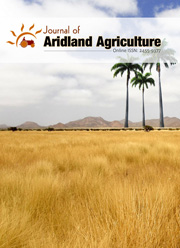Analysis of volatile compounds from three species of Atractylodes by Gas Chromatography-Mass Spectrometry
DOI:
https://doi.org/10.25081/jaa.2021.v7.7019Keywords:
Volatile compounds, medicinal plants, Atractylodes chinensis, Atractylodes japonica, Atractylodes lancea, essential oil, GC-MS analysisAbstract
A total of 99 different volatile compounds were detected through Gas Chromatography-Mass Spectrometry (GC-MS) from three species of Atractylodes, namely Atractylodes lancea, Atractylodes japonica, and Atractylodes chinensis. Thirteen-volatile flavor compounds i.e., acid, alcohol, aldehyde, alkane, alkene, alkyne, ester, ketone, monoterpene, oxygenated monoterpene, sesquiterpene, oxygenated sesquiterpene, and oxygenated triterpenoid detected from different species of Atractylodes. It was observed that all the species contained 38 common compounds, while A. lancea contained 7 unique compounds, A. japonica has 4 unique compounds, and A. chinensis hold 6 compounds not detected in the other extracts. In addition, essential oils from A. lancea and A. japonica possessed 11 compounds in common, and A. lancea and A. chinensis possessed 19 compounds in common. The remaining 14 compounds were detected only in A. japonica and A. chinensis. The total content of all components in the species was comparable, with 82.528%, 81.766%, and 81.799% of volatile components being detected for A. lancea, A. japonica, and A. chinensis, respectively. Curzerene was found to be the most predominant compound in both A. lancea (14.1%) and A. chinensis (16.7%), while murolan-3,9(11)-diene-10-peroxy was found predominantly in A. japonica (16.8%). The present study suggests that the identified volatile compounds may possess important biological properties, and could be suitable for application in both oriental medicines and the pharmaceutical industry.
Downloads
Published
How to Cite
Issue
Section
Copyright (c) 2021 Jin Piao, Soon Sung Lim, Haeng Hoon Kim, Sang Un Park, Sook Young Lee

This work is licensed under a Creative Commons Attribution-NonCommercial 3.0 Unported License.





 .
.